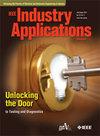A Secure Transmission Strategy for Smart Grid Communications Assisted by 5G Base Station
IF 4.2
2区 工程技术
Q2 ENGINEERING, ELECTRICAL & ELECTRONIC
引用次数: 0
Abstract
As the number of Internet of Things (IoT) devices in smart grids grows, security issues arise, including eavesdropping. The fifth generation (5G) wireless technologies are the driving force behind many IoT applications; hence, it is apparent that the broadcast nature of IoT devices makes data security unprecedentedly important. However, the operation of 5G base stations (BSs) incurs more power consumption cost for telecom operator and occupies the majority of the energy consumption in cellular wireless networks. In view of the above, we aim to increase the secrecy rate of smart grid communication networks by joint collaboration between utility companies and telecom operators, while also boosting mutual profitability in this paper. First, the impacts of secrecy rate on communication reliability in demand-side communication networks are evaluated. Next, we propose a secure transmission approach that leases the power of 5G BS to interfere with the eavesdroppers, improving the secrecy rate, and then construct an interference power allocation and price optimization algorithm based on the Stackelberg game to achieve the best results. Numerical results demonstrate that the proposed method can greatly enhance communication secrecy rate while also lowering the costs of the utility companies and telecom operator.求助全文
约1分钟内获得全文
求助全文
来源期刊

IEEE Transactions on Industry Applications
工程技术-工程:电子与电气
CiteScore
9.90
自引率
9.10%
发文量
747
审稿时长
3.3 months
期刊介绍:
The scope of the IEEE Transactions on Industry Applications includes all scope items of the IEEE Industry Applications Society, that is, the advancement of the theory and practice of electrical and electronic engineering in the development, design, manufacture, and application of electrical systems, apparatus, devices, and controls to the processes and equipment of industry and commerce; the promotion of safe, reliable, and economic installations; industry leadership in energy conservation and environmental, health, and safety issues; the creation of voluntary engineering standards and recommended practices; and the professional development of its membership.
 求助内容:
求助内容: 应助结果提醒方式:
应助结果提醒方式:


